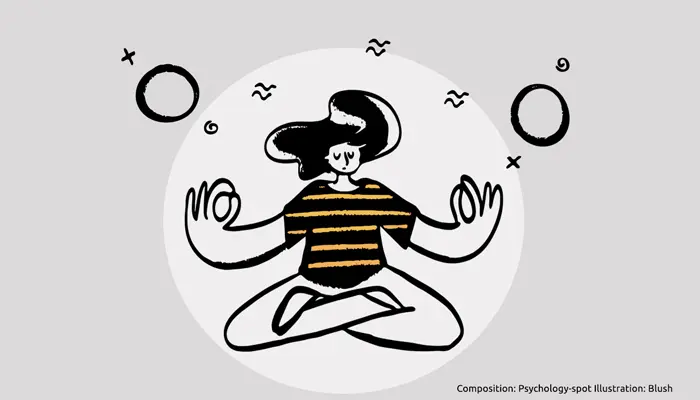
The society we live in consumes us psychologically. Noise, rush, stress and everyday problems end up undermining our mental balance, so it is not surprising that we also develop many different physical diseases. We can’t go living in a cave on a mountain top, but there’re many different techniques to improve the quality of life and find the peace we need, even in the midst of chaos. One of these techniques is the “Inner Smile”.
The inner smile is a Taoist art, a philosophical system that can also be adopted as a lifestyle. Many of the Taoist techniques have a long history, although in the West have been discovered only recently. These techniques are based in the concept of “Chi”, and the goal is to make circulate the life energy through the various meridians of the body to improve health, vitality and emotional and spiritual balance.
What is the “Chi”?
The word “Chi” has different meanings, but it could be translated as energy or essence. In Taoism, Chi is the energy that activates the universe, flowing in alternating cycles of positive and negative energy.
In fact, the Chi is what keeps us active, every day we use a part of this vital energy in our activities. However, when the Chi is weakened, we feel exhausted and also our health deteriorates. When some emotions persist over time, such as anger, sadness and fear, can block this energy and generate disease.
But improving our Chi is very simple: we just have to learn relax our body and let the energy flow. Just keep in mind the basic rule: “mind leads and the Chi follows the mind, and the Chi leads and the body follows the Chi”. In fact, applying the Inner Smile technique we won’t do anything more than direct the energy to different parts of the body, to benefit every organ.
About this, it was discovered that the problems of some organs are linked to specific emotions. For example, people with liver problems tend to be prone to anger and bad mood, heart problems are related to violence and cruelty, the malfunction of the pancreas causes anguish and sadness and kidney problems generate fear and uncertainty.
The power of a smile
When we smile, the brain acquires the feeling of satisfaction and emits positive vibrations throughout the body. In fact, it has been discovered that when we’re smiling are released neurotransmitters such as dopamine and serotonin, which help to relax the body and lower blood pressure. In addition, serotonin acts as an antidepressant. It is no coincidence that many of the antidepressants on the market today do nothing more but act on serotonin levels in the brain.
We also can not forget that smile is related to the thyroid gland. The act of smiling will increase the activity of this gland, relieving stress. Therefore, it is not surprising that a study conducted by the Wayne State University have found that people who appear in photographs smiling live longer.
On his side, Taoism ensures that cells that make up our bodies have a very sensitive membrane that is sensitive to smile. In fact, when we smile a feeling of well-being invades our body and we feel more relaxed.
About this, a study conducted at the University of Kansas makes it all clear. The researchers involved 170 people and divided them into three groups. In one group, participants had to imitate a smiling assistant to activate the same muscle groups that are activated during a genuine smile. Another group of people had to fake a smile and the third group simply had to maintain a normal expression. While doing that they had to solve a series of complex tests designed to increase the level of stress.
The researchers tracked their heart rate before, during and after the test, and also asked them how they felt. Obviously, the heart rate increased during the task as participants were stressed, but in the people who were smiling it returned fast to normal levels. In fact, those who imitated a genuine smile had a lower heart rate and reported to be less stressed and happier. This experiment shows that a smile protects us and reduces the level of stress, especially a genuine one.
The Inner Smile technique
The Inner Smile technique proposes to direct the smile to all parts of the body, including the internal organs and the nervous system. Smile conveys positive energy, which has the power to motivate, soothe, heal and generate well-being.
In fact, it is an ideal technique if you experience some kind of physical discomfort or are stressed, tensed and upset. It will help you transform the negative energy into positive energy and vitality.
Basically, consists in closing your eyes, relax your mind and remember something beautiful that makes you feel at peace and will generate a smile or a situation where you laughed with everything yourself. The idea is to focus on that feeling of cheerfulness, with your mind’s eye concentrate on the smile and transfer it throughout the body.
With help of attention and imagination, you can transfer this vitality and the feeling of gratitude to each of the body organs. At that point you are creating and emitting an inner feeling aimed to relax, nourish and refresh the organs.
You will know that the technique works when perceive a different feeling in the area you focused on, either a tingling, heat or a light pressure.
If you never practiced this technique is likely that you need indications. In this case, you can find several videos and courses on the Internet that will help you.
Source:
Kraft, t. & Pressman, S. (2012) Grin and Bear It: The Influence of Manipulated Positive Facial Expression on the Stress Response. Psychological Science; 23(11):1372-1378.
Abel E. and Kruger M (2010) Smile Intensity in Photographs Predicts Longevity. Psychological Science; 21: 542–544.



